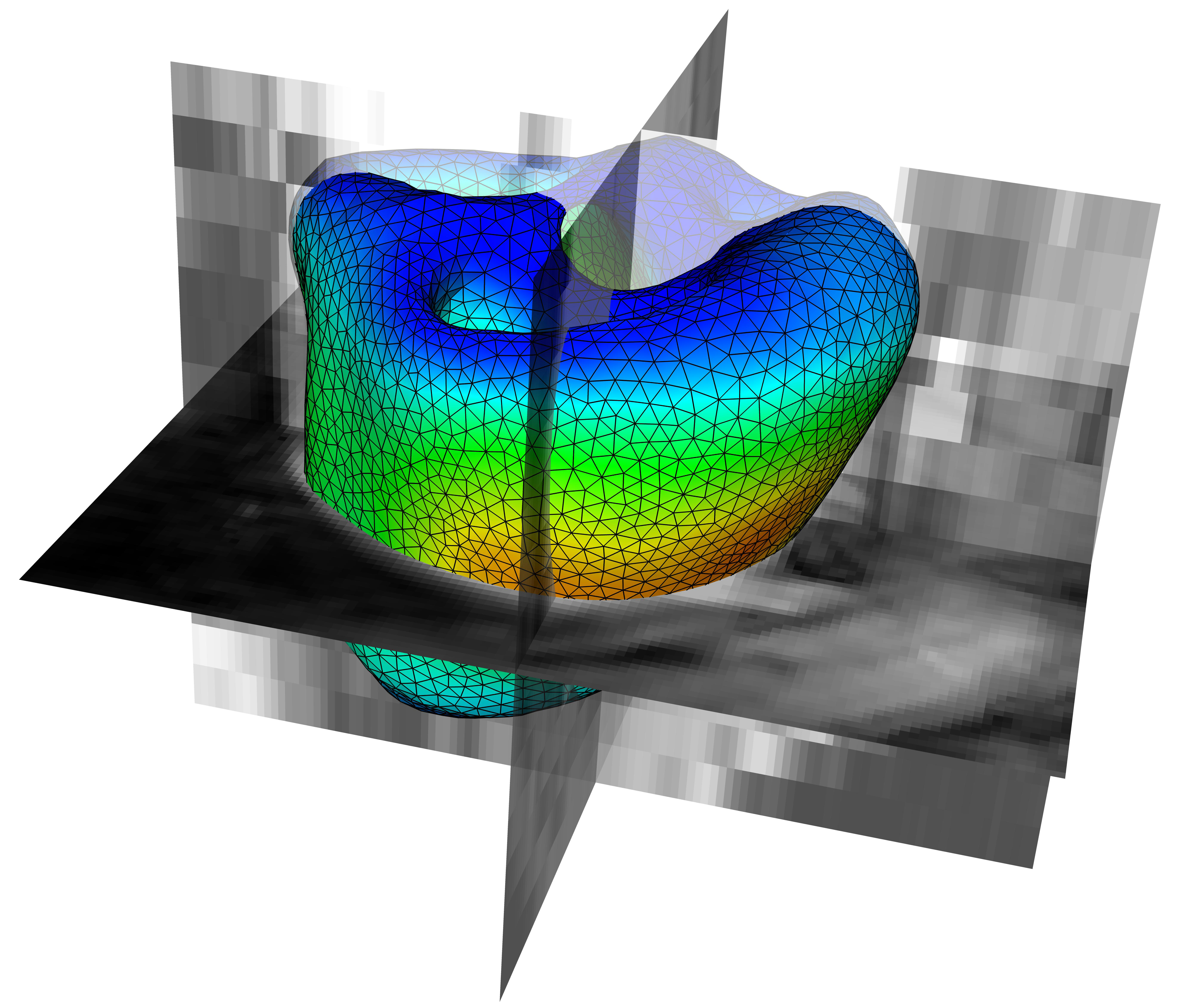Section: New Results
Model-Data Interaction
State observers of a vascular fluid-structure interaction model through measurements in the solid
Participants : Cristobal Bertoglio [Reo Project-Team] , Dominique Chapelle, Miguel Angel Fernández [Reo Project-Team] , Jean-Frédéric Gerbeau [Reo Project-Team] , Philippe Moireau.
We analyze the performances of two types of Luenberger observers – namely, the so-called Direct Velocity Feedback and Schur Displacement Feedback procedures, originally devised for elasto-dynamics – to estimate the state of a fluid-structure interaction model for hemodynamics, when the measurements are assumed to be restricted to displacements or velocities in the solid. We first assess the observers using hemodynamics-inspired test problems with the complete model, including the Navier-Stokes equations in Arbitrary Lagrangian-Eulerian formulation, in particular. Then, in order to obtain more detailed insight we consider several well-chosen simplified models, each of which allowing a thorough analysis – emphasizing spectral considerations – while illustrating a major phenomenon of interest for the observer performance, namely, the added mass effect for the structure, the coupling with a lumped-parameter boundary condition model for the fluid flow, and the fluid dynamics effect per se. Whereas improvements can be sought when additional measurements are available in the fluid domain in order to more effectively deal with strong uncertainties in the fluid state, in the present framework this establishes Luenberger observer methods as very attractive strategies – compared, e.g., to classical variational techniques – to perform state estimation, and more generally for uncertainty estimation since other observer procedures can be conveniently combined to estimate uncertain parameters. See paper [11] .
Improving Efficiency of Data Assimilation Procedure for a Biomechanical Heart Model by Representing Surfaces as Currents
Participants : Alexandre Imperiale, Alexandre Routier [Aramis Team] , Philippe Moireau, Stanley Durrleman [Aramis Team] .
We adapt the formalism of currents to compare data surfaces and surfaces of a mechanical model and we use this discrepancy measure to feed a data assimilation procedure. We apply our methodology to perform parameter estimation in a biomechanical model of the heart using synthetic observations of the endo- and epicardium surfaces of an infarcted left ventricle. We compare this formalism with a more classical signed distance operator between surfaces and we numerically show that we have improved the efficiency of our estimation justifying the use of state-of-the-art computational geometry formalism in the data assimilation measurements processing. See paper [24] .
Optimal observer for parabolic problems
Participants : Karine Mauffrey, Philippe Moireau.
We aim at proposing optimal observers strategies for reconstructing the solution of general systems of PDEs using avalaible observations, including both wave-type equations and heat-like equations. The main objective of this work is to present a self-contained analysis. For a general parabolic system, we have established the exponential stability of the operator occurring in the equation satisfied by the error between the target and the optimal observer. The proof relies on two major hypotheses: an observability inequality satisfied by the observation operator and a controllability property for the modeling error operator by which model noises enter the dynamics (controllability property which is related to the invertibility of the solution of the associated infinite dimensional Riccati equation). The next questions we want to tackle are the discretisation of the model and the construction of a reduced Kalman filter.



